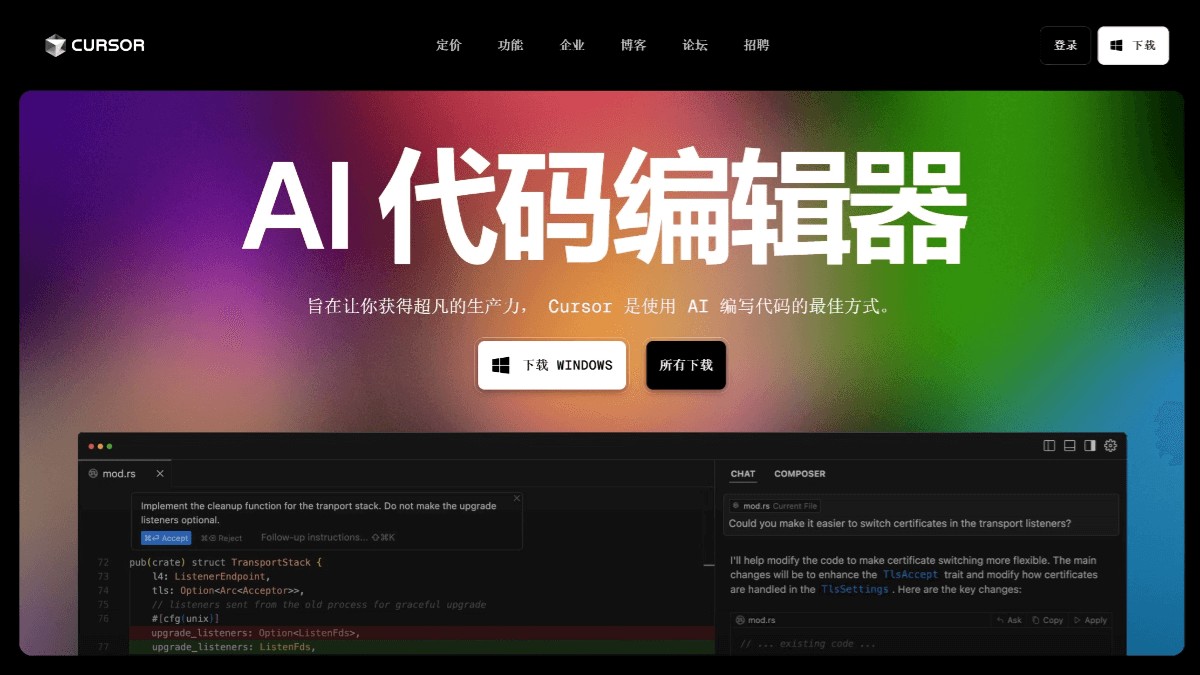
Inventory management is a core link in business operations, especially for retailers, manufacturers and distributors. Good inventory management can directly affect cost control, customer satisfaction and market response speed. Traditional inventory management methods rely on manual inventory and simple forecast models. Although these methods can provide support to a certain extent, they are insufficient when faced with dynamic market demands and complex supply chain environments. Today, AI (artificial intelligence) is bringing revolutionary changes to inventory management, making it more efficient, accurate and intelligent.
One of the core applications of AI in inventory management is demand forecasting. Through machine learning algorithms, AI can extract potential demand patterns from a large amount of historical sales data, market trends, seasonal changes and other multi-dimensional information. Compared with traditional forecasting methods, AI can provide more accurate demand forecasts with larger amounts of data and more complex models.
Example:
Amazon uses AI and big data analysis to predict product demand, combining factors such as seasonality, promotions and market trends to achieve precise inventory optimization.
Walmart uses AI technology to analyze product sales and market dynamics to ensure that product inventory is always at the optimal level.
The combination of AI and Internet of Things (IoT) technology makes inventory management more accurate and real-time. AI can cooperate with equipment such as RFID tags, barcode scanners and sensors to track inventory changes in real time, automatically update data, and avoid manual inventory and human errors. In addition, AI can also automatically adjust inventory strategies based on real-time data feedback to ensure that goods can be replenished in time when demand changes.
Example:
JD.com uses an AI-driven warehouse robot system to improve the efficiency and accuracy of warehouse management through automated inventory and replenishment.
Ocado uses a combination of AI and robotics technology to efficiently complete the access and sorting of goods in the warehouse, improving warehousing efficiency and inventory accuracy.
AI can not only predict demand but also automatically adjust replenishment strategies based on sales trends, seasonal fluctuations and other external factors. AI systems help companies avoid additional costs caused by excessive inventory or out-of-stocks by analyzing which items will be in shortage, when to replenish them, and the optimal quantity to replenish.
Example:
Zara uses AI intelligence to predict hot-selling products and adjust inventory and replenishment amounts in real time to avoid overstocking due to slow sales.
Costco uses AI to optimize the replenishment process and ensure timely replenishment of hot-selling products by predicting product demand while avoiding excess inventory.
For goods with shelf life (such as food, medicine, etc.), AI can effectively manage inventory loss and expiration risks. By dynamically monitoring the expiration date, sales cycle and market demand of inventory products, AI can issue alerts in advance and optimize product scheduling and sales strategies to reduce inventory losses.
Example:
Walmart uses AI in its food business to predict the expiration time of products and automatically adjust the product sales plan to ensure that expired products are sold or removed in a timely manner.
Supermarkets and fresh food retailers use AI technology to effectively manage perishable inventory, maximize their sales cycle and reduce waste.
The application of AI in inventory management is not limited to warehouses, but can also be closely integrated with supply chain management. Through AI collaboration with suppliers, transportation companies and logistics service providers, the system can obtain changes in inventory demand in real time and quickly adjust procurement, transportation and distribution plans to optimize overall supply chain efficiency.
Example:
FedEx and UPS use AI to predict optimal transportation routes and schedule deliveries, reducing transportation time and costs and improving supply chain response speed.
Nike uses the integration of AI and supply chain to ensure optimal coordination of inventory management processes and logistics transportation, improving overall operational efficiency.
By analyzing market data, consumer demand, price changes and other factors, AI can help companies formulate smarter sales strategies and ensure rapid inventory turnover. AI can automatically adjust pricing, promotion and promotion strategies based on product inventory levels, sales trends and market competition to avoid overstocking and unsaleable products.
Example:
Dynamic pricing : Through AI algorithms, retailers can automatically adjust product prices based on real-time market demand, thereby optimizing sales and inventory management.
Promotional strategy optimization : AI can automatically adjust promotional activities based on inventory status and consumer demand to promote rapid sales of slow-moving goods.
AI technology provides a new solution for inventory management, helping companies improve inventory accuracy, reduce inventory costs, speed up supply chain response, and improve customer satisfaction. Whether through demand forecasting, real-time tracking, replenishment optimization, or inventory loss and expiration management, AI continues to promote the intelligent development of inventory management. With the continuous development and application of AI technology, future inventory management will be more intelligent, accurate and efficient, helping companies maintain their advantages in a fiercely competitive market environment.



